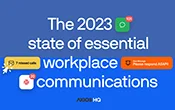 Jon Schubin |
As an assistant account executive, I was required to keep a three-inch binder full of materials regarding a client, including a full media list, copies of important emails, printouts of the client’s website and a list of editorial calendars. These calendars would be compiled during a three-week rush in the late fall, when every employee below a certain level would be required to call publications and request access to documents.
Editorial calendars fill three roles. First, they direct reporting staff on topics to cover throughout the year, helping ease the weekly or monthly burden of empty pages. They also let advertisers know about special sections, allowing them to reach niche sponsors and place specific ads. And for public relations professionals, the editorial calendar also allowed the chance to know in advance about a feature that might be relevant to the client.
The editorial calendar was comforting to all parties. Every month there would be an opportunity or two in an industry trade publication. It wasn’t the entirety of a program, of course, but it was a reliable element. Call an editor a few weeks in advance of an issue hitting the newsstands, tell them why a client would be a worthwhile inclusion, and arrange an interview.
Those days are over.
Like so many relics of the print-dominated age of communication, it was a slow death. Much like the list of stocks in the business section or the faxed press release, every year the editorial calendar hunt slowly brought in fewer results. There would be times in the year — usually slow moments in the middle of the summer — when a boss would suggest to account executives to get a needed client hit through editorial calendars. We’d consult the binder and meekishly shrug our shoulders. The cupboard was empty.
Technology helped facilitate this decline. Many trade publications reduced publication schedules. Online journals were seldom bound by content devised months in advance. Major newspapers pulled back as well, usually to just a few reliable features and pullout sections.
Today the editorial calendar landscape is much like the Byzantine Empire in the thirteenth century: a rapidly declining state merely pretending to carry out tradition. Calendars are now available to nearly everyone with a click, through services like Gorkana and Cision. But the information contained inside them is usually simply a suggestion of what might be happening that particular week.
I remember one conversation with a Financial Times editor who described their publication’s — still quite robust — calendar as a mere “guess” at what they might want to do. This makes sense, as it’s really quite rare that a supplement matches its original time and description.
Replacing editorial calendars underscores something even more old-fashioned: relationships. In order to understand what may interest a particular reporter, it’s important to get a feel for them. Follow their writing. See the types of experts they quote. Speak to them on the phone. Use individual or more transactional email exchanges to push for a larger conversation. Follow them on Twitter to see their thoughts in near-real time.
We’re in an era where figuring out to how participate in the news cycle requires actually reading some news. And that’s a good thing.
* * *
Jon Schubin is Vice President at Cognito.


 Most company leaders feel that they’re doing a good job when it comes to internal comms, according to communications management platform Axios HQ. Employees, however, aren’t quite so sure.
Most company leaders feel that they’re doing a good job when it comes to internal comms, according to communications management platform Axios HQ. Employees, however, aren’t quite so sure. More than a third of small-business owners continue to work with their most problematic clients, according to a recent report.
More than a third of small-business owners continue to work with their most problematic clients, according to a recent report. The November presidential election could set into motion a period of uncertainty, social unrest and panic, which includes disruption in many workplaces. Here are a few steps business leaders can take to avoid an employee election meltdown.
The November presidential election could set into motion a period of uncertainty, social unrest and panic, which includes disruption in many workplaces. Here are a few steps business leaders can take to avoid an employee election meltdown. Without financial transparency about both salaries and profits, there will always be a degree of suspicion as to where all the profits go, as well as resentment from the staff for the strict code of secrecy about agency finances in general. (1 reader comment)
Without financial transparency about both salaries and profits, there will always be a degree of suspicion as to where all the profits go, as well as resentment from the staff for the strict code of secrecy about agency finances in general. (1 reader comment) WPP’s Mark Read has hired Jacqui Canney, executive VP-chief people officer at Wal-Mart Inc., to oversee talent management, leadership development, rewards and recruiting activities of the ad/PR combine.
WPP’s Mark Read has hired Jacqui Canney, executive VP-chief people officer at Wal-Mart Inc., to oversee talent management, leadership development, rewards and recruiting activities of the ad/PR combine.


 Have a comment? Send it to
Have a comment? Send it to 
No comments have been submitted for this story yet.